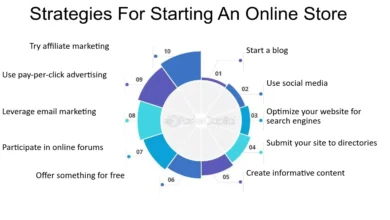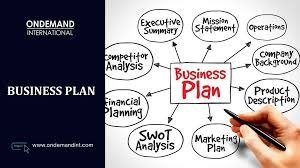The Fundamentals of Demand Generation Marketing Explained

In today’s hyper-competitive business landscape, companies must go beyond traditional marketing to attract, engage, and retain customers. One of the most effective modern strategies is demand generation marketing—a comprehensive approach that builds awareness, creates interest, and drives consistent engagement throughout the customer journey. Far from being a one-time tactic, demand generation marketing is a long-term strategy designed to foster trust, develop meaningful relationships, and ultimately fuel sustainable business growth. Here’s a deep dive into the core principles that make demand generation an essential tool for modern marketers.
Laying the Groundwork: What Is Demand Generation?
Demand generation marketing is the strategic process of cultivating interest and desire for a product or service, starting well before a potential buyer is ready to make a decision. It involves a series of coordinated efforts designed to educate prospects, build credibility, and keep your brand top-of-mind.
Unlike lead generation, which focuses specifically on capturing contact details, demand generation takes a broader and more holistic approach. It aims to engage audiences at all stages of the buying journey, using a variety of touchpoints—such as educational content, webinars, or targeted advertising—to guide them from awareness to consideration to decision.
In practice, this might look like a SaaS company publishing a series of articles about emerging industry challenges. While these articles don’t push a product directly, they spark awareness and position the company as a knowledgeable, trustworthy source.
The Strategic Pillars of Demand Generation
Effective demand generation rests on three foundational principles:
1. Deep Audience Understanding
To generate meaningful demand, marketers must first understand who they’re targeting. This involves building detailed buyer personas that capture demographics, challenges, goals, and decision-making behaviors. Knowing what matters to your ideal customer shapes the messaging, content, and channels used.
2. Consistency and Continuity
Demand generation is an ongoing effort, not a single campaign. Brands must deliver consistent, high-quality content across multiple platforms to reinforce messaging over time. This repetition builds familiarity and trust, which are critical for long sales cycles.
3. Data-Driven Measurement
Unlike brand awareness efforts that may feel abstract, demand generation requires concrete metrics. Success is tracked using key indicators such as website traffic, engagement rates, content downloads, and pipeline contribution. These insights help refine strategies and optimize ROI.
Crafting the Customer Journey
A central element of demand generation is aligning marketing efforts with the buyer’s journey, typically broken into three stages:
Awareness Stage
Here, prospects are just beginning to recognize a problem or need. Marketing efforts focus on visibility and education. Tactics include:
- Blog articles on industry trends
- Social media posts
- Infographics and explainer videos
A healthcare SaaS provider, for example, might publish a guide to HIPAA compliance to raise awareness among clinics.
Consideration Stage
At this point, the audience is exploring potential solutions. Deeper, more targeted content becomes essential:
- Webinars
- Case studies
- Product comparison guides
The focus shifts to demonstrating value and solving pain points—without overt selling.
Decision Stage
Prospects are ready to engage more directly. Demand generation supports this phase with:
- Free trials or demos
- Consultations
- Personalized offers
After purchase, the journey continues into retention and advocacy, ensuring customers remain engaged and become brand advocates.
See also: The Future of Text to Image Technology in Visual Media
Why Content Is King in This Arena
Content is the engine of demand generation. It educates, informs, and persuades—subtly guiding prospects without pushing a hard sell. But content only works when it’s relevant and valuable.
Effective content:
- Solves specific problems
- Highlights unique industry insights
- Reinforces brand authority
A manufacturer targeting small businesses, for example, might create a whitepaper on how to optimize supply chains for cost-efficiency, with indirect references to their solutions.
Distribution strategy is equally important. Strong SEO ensures discoverability. Paid ads and partnerships extend reach. Repurposing content across formats—like turning a blog into a podcast or social post—maximizes exposure and impact.
The Role of Technology in Driving Demand
Demand generation is increasingly tech-enabled. Marketing technology (MarTech) streamlines execution, enhances personalization, and enables real-time optimization. Key tools include:
- CRM systems (e.g., Salesforce) for lead tracking and segmentation
- Marketing automation platforms (e.g., HubSpot, Marketo) for campaign delivery and scoring
- Analytics tools (e.g., Google Analytics, Tableau) for performance measurement
Automation is a game changer. It allows marketers to:
- Trigger follow-up emails based on behavior
- Schedule social posts in advance
- Score leads by engagement level
This frees up teams to focus on strategy, creativity, and campaign optimization.
Data analytics drives continuous improvement. For example, high webinar registration rates might indicate demand for more content on that topic, prompting additional formats like eBooks or videos.
Overcoming Common Challenges
While powerful, demand generation isn’t without obstacles. Common challenges include:
Sales and Marketing Misalignment
Because demand generation spans the full funnel, close collaboration is essential. When marketing generates interest, sales must be ready to capitalize. Shared definitions of qualified leads, joint planning sessions, and integrated CRMs help bridge the gap.
Expectation Management
Demand generation is a long-term play. Stakeholders accustomed to immediate returns may struggle with delayed outcomes. Marketers must set clear expectations and demonstrate incremental wins—like increased traffic or engagement—as evidence of progress.
Limited Resources
Smaller teams may find it difficult to consistently produce content or manage multiple channels. The solution: start small. Focus on one or two proven tactics—like a blog series or monthly webinar—and expand as momentum builds.
Measuring Success Beyond the Bottom Line
Success in demand generation is best evaluated through a blend of quantitative and qualitative metrics:
Quantitative metrics:
- Website traffic and time on page
- Content downloads and webinar attendance
- MQL volume and conversion rates
- Sales cycle length and deal value
Qualitative indicators:
- Increased brand mentions
- Improved customer sentiment
- Sales feedback on lead quality
- Referrals and word-of-mouth growth
These metrics offer a fuller picture of performance, revealing how demand generation builds brand equity, not just immediate revenue.
The Future of Building Demand
Demand generation continues to evolve with technological and cultural shifts. Emerging trends include:
Artificial Intelligence (AI)
AI tools now power predictive lead scoring, content recommendations, and personalized outreach—enhancing both efficiency and effectiveness.
Account-Based Marketing (ABM)
More B2B companies are integrating ABM with demand generation to focus efforts on high-value targets using personalized content and direct engagement.
Purpose-Driven Messaging
Audiences increasingly favor brands that reflect their values. Demand generation must align messaging with issues like sustainability, inclusion, and ethical business practices.
Content Innovation
Short-form video, virtual events, and immersive experiences like AR/VR are becoming standard in demand strategies, especially for B2C and tech-driven B2B sectors.
Elevating Marketing Through Demand
Demand generation isn’t just a tactic—it’s a mindset that reshapes how companies attract and engage their audiences. By educating rather than selling, and by prioritizing long-term relationships over short-term transactions, demand generation builds lasting brand strength.
For marketers seeking to create consistent pipeline, elevate their brand, and deliver measurable impact, mastering the fundamentals of demand generation is essential. As digital behaviors and buyer expectations continue to evolve, those who embrace this strategic discipline will be best positioned to grow, adapt, and lead in the years ahead.





